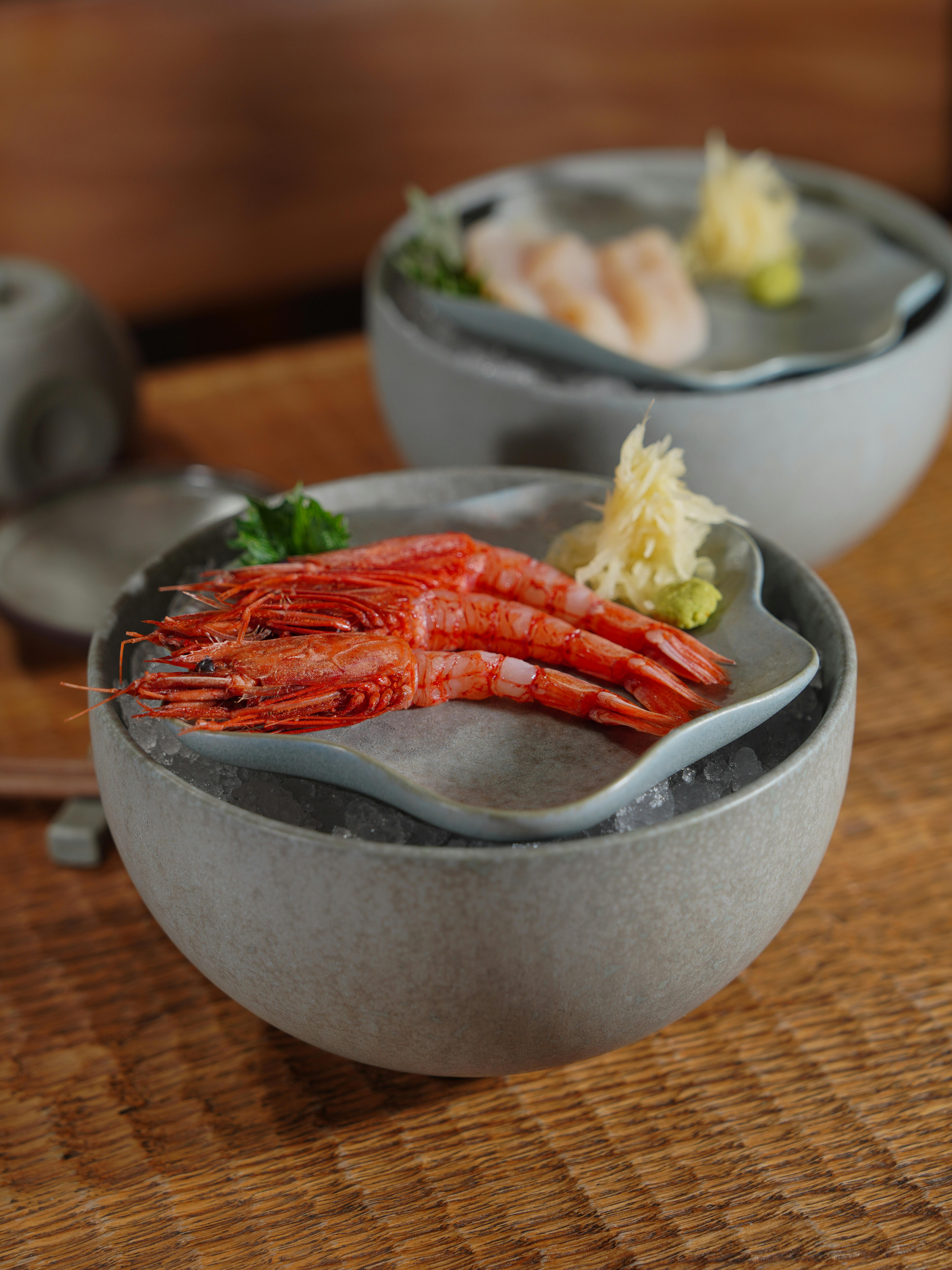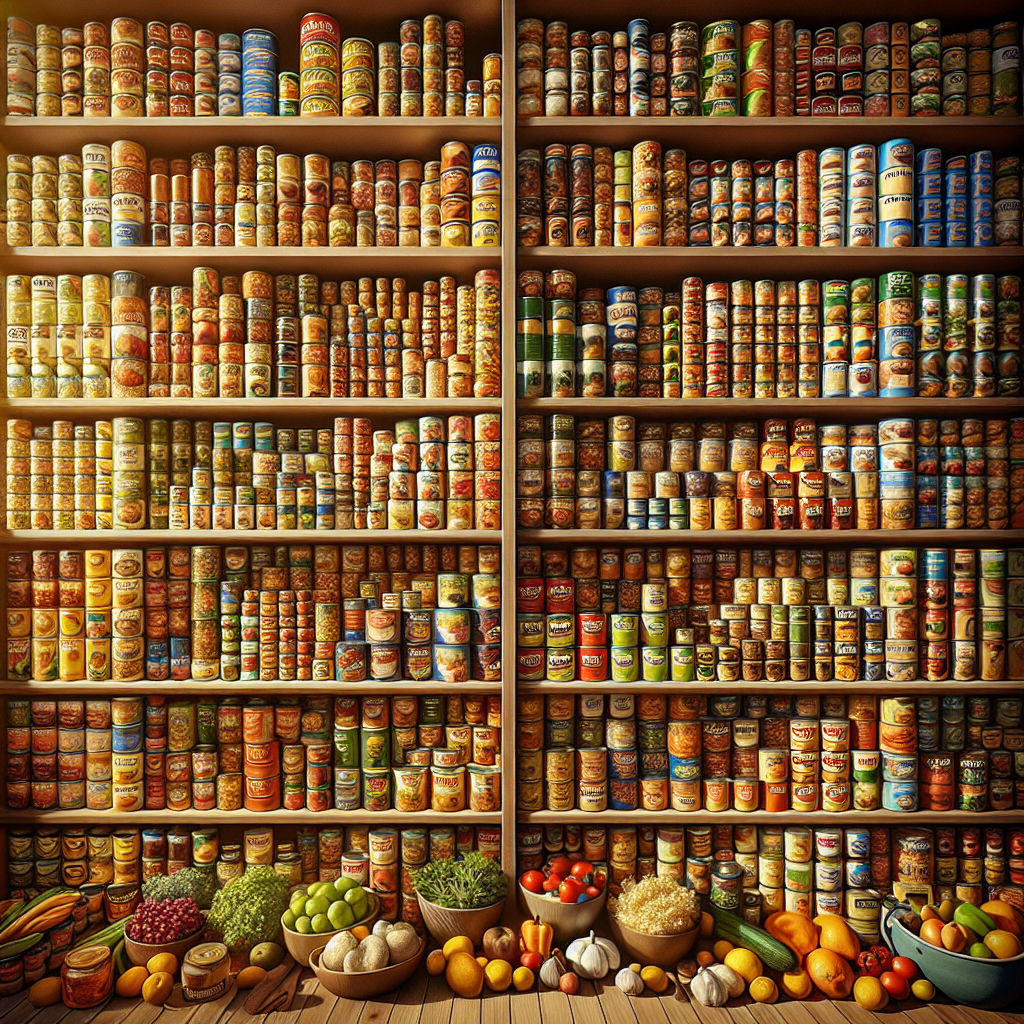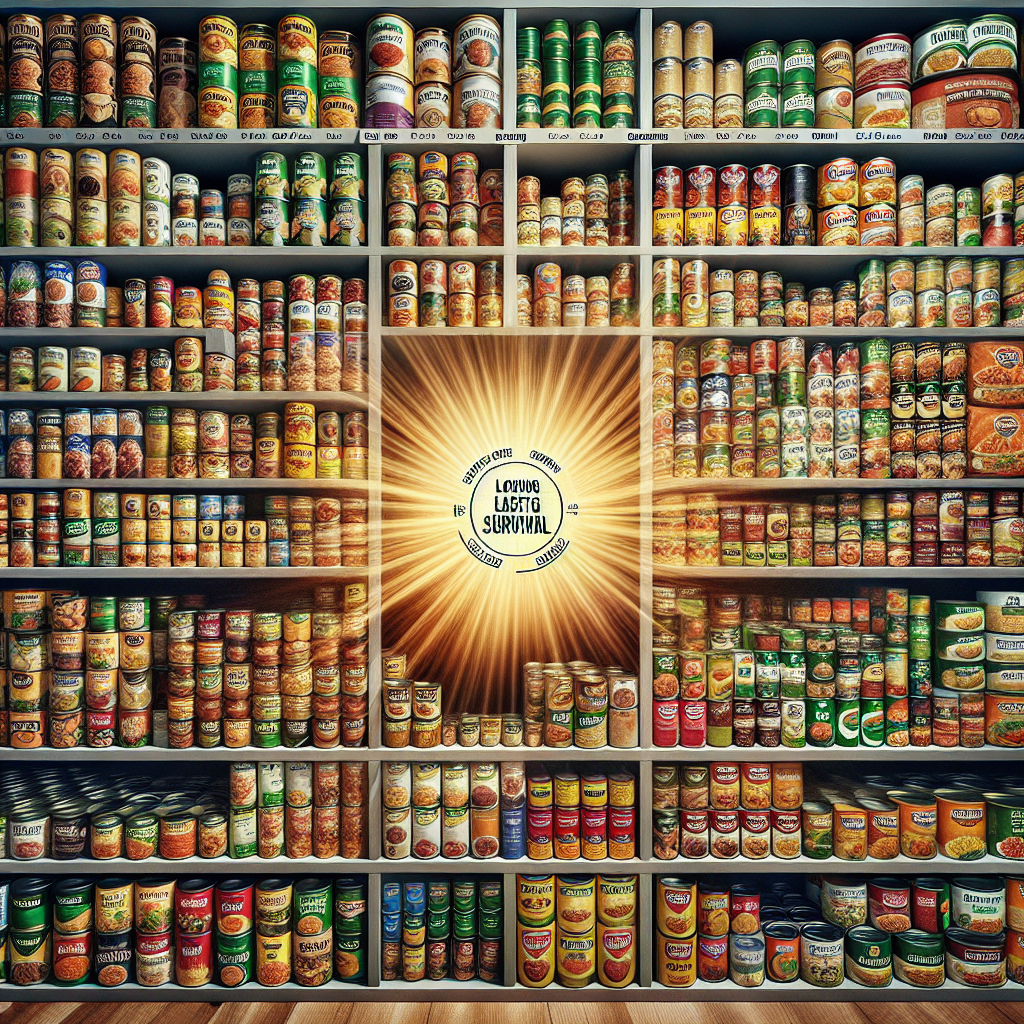In the fast-paced world we live in, it’s always a good idea to be prepared for the unexpected. That’s why knowing how to store canned foods for long-term survival is crucial. Whether you’re facing a natural disaster or simply want to be ready for any situation, having a well-stocked pantry can provide peace of mind. From selecting the right canned foods to storing them properly, this article will guide you through the essentials of ensuring your long-term food supply stays safe, nutritious, and ready to sustain you when you need it the most.

Choosing the Right Canned Foods
When it comes to choosing the right canned foods for your long-term survival needs, there are a few important factors to consider. One of the most significant considerations is the nutritional value of the canned goods. Look for foods that contain essential nutrients such as protein, carbohydrates, and vitamins. Opt for canned foods that provide a good balance of macro and micronutrients to ensure you are getting the necessary fuel and nutrients for your body.
Another crucial factor to consider is the shelf life of the canned foods. You want to ensure that the foods you choose have a long enough shelf life to last until you need to use them. Pay attention to the expiration dates and select canned items that will remain safe and edible for an extended period. This way, you can rest assured that the food you have stored will still be safe to consume when you need it most.
It is also essential to pay attention to the sodium content of canned foods. High-sodium products can lead to health issues such as high blood pressure and kidney problems. Consider opting for low-sodium or no-salt-added canned foods to minimize your sodium intake. By choosing low-sodium options, you can maintain a healthier diet while still ensuring you have enough food stored for any emergency situation.
Storing Environment
Once you have chosen the right canned foods for your long-term survival, it is crucial to store them properly to maintain their quality and safety. The storage environment plays a significant role in ensuring that your canned goods stay in good condition over time.
Temperature and humidity are two critical factors to consider when storing canned foods. Aim to store your canned goods in an area where the temperature remains consistent and cool. Extreme temperature variations can have a detrimental effect on the quality of your stored food. Similarly, high humidity can lead to the growth of mold and spoilage. Find a storage space that is dry and has a humidity level of around 50-70% for optimal conditions.
Proper ventilation is also essential when storing canned foods. Adequate airflow helps prevent the buildup of moisture and condensation, which can lead to a loss of quality in your stored food. Ensure that the storage area has proper ventilation to keep your canned goods fresh and free from spoilage.
Organization and Rotation
Maintaining an organized storage system for your canned foods is crucial to ensuring that you can easily access what you need when the time comes. One way to achieve this is by creating an inventory system. Keep a list or spreadsheet of the canned goods you have stored, including the quantities and expiration dates. This will help you keep track of what you have and when it needs to be consumed or replaced.
When it comes to using your canned goods, it is essential to follow the First In, First Out (FIFO) method. This means that you should use the oldest cans first before moving on to the newer ones. By doing this, you can ensure that your canned foods are consumed before they reach their expiration dates, reducing the risk of wasted food and maintaining a fresh and reliable food supply.
Regularly checking the expiration dates of your canned foods is also crucial. While canned goods can have a long shelf life, it is still important to monitor the dates to ensure that you are consuming them within a safe time frame. Make it a habit to inspect your stored canned foods periodically and remove any items that have expired.
Properly labeling and dating your cans is another essential aspect of organization and rotation. This will help you easily identify the contents of each can and determine when they were stored. Use a permanent marker or label maker to label each can with its contents and the date it was stored. This will make it easier for you to keep track of what you have and when it needs to be used or replaced.
Storage Containers
Choosing the right storage containers for your canned foods is crucial to maintaining their quality and extending their shelf life. Sturdy and airtight containers are ideal for storing canned goods as they help keep out moisture, air, and pests that can damage the food.
Avoid using metal storage containers as they can react with the acids in the canned food and affect its taste and quality. Instead, opt for food-grade plastic containers or glass jars with tight-fitting lids. These materials are non-reactive and will not compromise the integrity of the canned food.
Consider choosing BPA-free storage options to ensure that no harmful chemicals leach into your food. Bisphenol-A (BPA), commonly found in plastics, can have adverse health effects. By selecting BPA-free containers, you can protect your health while storing your canned goods.
To further protect your canned foods from moisture, consider using moisture absorbents. Silica gel packets or oxygen absorbers can help reduce moisture inside the storage containers, preventing spoilage and extending the shelf life of the canned goods.

Location and Accessibility
The location of your canned food storage area plays a vital role in maintaining their quality and safety. Choosing a cool and dark area for storage is crucial to prevent heat and light from deteriorating the food. Look for a spot in your home that remains consistently cool, away from direct sunlight, and free from excessive heat sources such as stoves or heaters.
Extreme temperature variations can have a detrimental effect on canned goods, causing them to spoil or lose their quality. Avoid placing your canned foods in areas where the temperature fluctuates dramatically. Instead, find a location that remains relatively stable throughout the year.
Accessibility is another key consideration when choosing a storage area for your canned goods. Ensure that the area is easy to access so that you can quickly retrieve your stored food when needed. Consider organizing your storage space with shelves or bins to maximize accessibility and maintain a clear inventory of your canned goods.
Inspecting and Handling Canned Foods
Inspecting and handling your canned foods properly is essential to ensure their safety and quality. Before consuming any canned food, take the time to check for dents, bulges, or leaks. These can be signs of compromised packaging, which may indicate that the food inside is no longer safe to consume. If you notice any damage to the cans, it is best to err on the side of caution and discard them.
Strange smells coming from canned foods can indicate spoilage or bacterial growth. If you notice any odd or foul odors when opening a can, it is prudent to avoid consuming the contents. Always trust your senses and prioritize your health and safety when it comes to consuming canned foods.
Before opening a can, it is advisable to wash the exterior to remove any dirt or contaminants. Simply rinsing the can under warm water will suffice. This extra step helps ensure that no outside pollutants are introduced into the canned food when opening it, further preserving its quality and safety.
Properly disposing of damaged cans is important to prevent accidentally consuming spoiled or contaminated food. Instead of throwing damaged cans in the regular trash, seal them in a bag or container and dispose of them in a manner specified by your local waste management guidelines. By doing so, you can prevent any potential health risks associated with damaged or compromised canned goods.

Pest Prevention
Preventing pests from accessing and damaging your canned goods is crucial to maintaining their quality and safety. One of the first steps in pest prevention is sealing cracks and gaps in the storage area. Ensure that windows, doors, and walls are properly sealed to prevent pests from entering and reaching your canned food supply.
Properly storing your canned foods above ground can also help deter pests. Elevating your stored foods on shelves or racks can make it more difficult for pests such as rodents or insects to access them. Additionally, regularly cleaning the storage area and removing any food debris can also discourage pests from making your canned goods their next meal.
Using pest-repellent products such as traps or repellent sprays can provide an extra layer of protection against pests. Place traps strategically near the storage area to catch any pests that may try to invade your canned food supply. Repellent sprays can also be used to create a barrier around the storage area, deterring pests from coming near.
Regularly inspecting and cleaning the storage area is essential to ensure that pests are not causing any damage. Look out for signs of pest activity such as droppings, gnaw marks, or nesting materials. If you notice any indication of pest presence, take immediate action to eliminate the infestation and protect your stored food.
Managing Temperature Fluctuations
To ensure the long-term survival of your canned foods, it is important to manage temperature fluctuations effectively. Monitoring and regulating the temperature in your storage area is crucial to prevent extreme temperatures from compromising the quality and safety of your canned goods.
Investing in a thermometer to monitor the temperature is a simple yet effective way to ensure that your canned foods are stored in the optimal conditions. Place the thermometer in the storage area and regularly check it to ensure that the temperature remains within the recommended range for canned food storage.
In extreme climates where temperatures regularly fall below freezing, it may be necessary to insulate the storage area. Insulation helps create a barrier to protect the stored food from the freezing temperatures outside. Consider using materials such as insulation boards or bubble wrap to insulate the storage area and maintain a consistent temperature.
During freezing conditions, applying heat sources in the storage area can help prevent the canned goods from freezing. Electric heaters or heat lamps can be used to generate enough heat to keep the storage area above freezing temperatures. Be sure to monitor the temperature closely to prevent overheating and potential damage to the canned goods.
Similarly, in hot environments, it is important to prevent overheating in the storage area. Ensure that the storage area is well-ventilated and has proper airflow to dissipate heat. Consider using fans or installing vents to facilitate air circulation and maintain a cooler temperature inside the storage area.

Emergency Preparedness
When storing canned foods for long-term survival, it is essential to be prepared for emergency situations. Maintaining an emergency kit is an important aspect of being prepared. Include essential items such as a can opener, matches, flashlight, and first aid supplies in your emergency kit. These items will ensure that you have the necessary tools to access and use your stored canned foods in case of an emergency.
Monitoring your food inventory regularly is essential for emergency preparedness. Keep track of the quantities and types of canned goods you have stored and ensure that you have enough to sustain yourself and your family for an extended period. Regularly review and update your emergency food inventory to ensure that you are adequately prepared.
Be aware of the signs of spoilage in canned foods. If you notice any bulging, leaking, or foul odors coming from a can, do not consume its contents. Understanding the signs of spoilage will help you identify any potential issues with your stored canned goods and prevent the consumption of unsafe food.
Having alternative food storage methods can provide an additional layer of security for emergency situations. Consider other options such as freeze-dried or dehydrated foods, which can have a longer shelf life than canned goods. By diversifying your food storage methods, you can ensure a more versatile and sustainable food supply in times of need.
Canned Foods Shelf Life
Understanding the shelf life of canned foods is essential to maintain their quality and ensure that they will still be safe to consume when needed. While canned foods have a relatively long shelf life, it is important to be aware of the expiration dates and best-before dates to prevent consuming expired or spoiled food.
The expiration dates printed on canned foods indicate the date until which the food is guaranteed to be safe to consume. It is important to pay attention to these dates and consume the food before they expire to ensure its safety and quality.
Factors such as storage conditions, packaging integrity, and the type of food can affect the shelf life of canned goods. Proper storage in suitable conditions can help extend the shelf life of canned foods. Paying attention to factors such as temperature, humidity, and exposure to light can help ensure that your canned goods remain safe and edible for an extended period.
To further extend the shelf life of canned foods, rotation and consumption before expiry are essential. Following the First In, First Out (FIFO) method ensures that the oldest cans are used before the newer ones, minimizing the risk of expired or wasted food. Regularly checking the expiration dates and consuming the food before they expire will help maintain a fresh and reliable food supply.
In conclusion, storing canned foods for long-term survival requires careful consideration and proper handling. By choosing the right canned foods, creating an organized storage system, using appropriate containers, and monitoring the storage environment, you can ensure the quality, safety, and longevity of your stored food. With careful planning and adherence to best practices, you can be well-prepared for any emergency situation.






